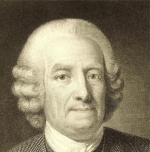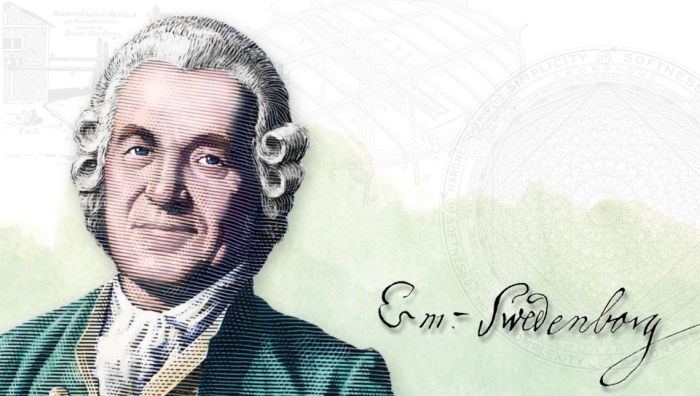
Swedenborg was a respected academic who methodically described the spiritual world, and left a strange collection of works which captivated the most eminent thinkers. Swedenborg derived inspiration from dreams and visions, and claimed to be able to visit heaven and hell at will. His works were widely read after his death and highly regarded by poets, writers and mystics such as Blake, Baudelaire, Strindberg, Balzac, Yeats, Jung, and William James.
A doctor of philosophy by the age of 21, Swedenborg travelled around Europe seeking out the most important scientists of his day. When he returned to Sweden in 1714, his incredible breadth of knowledge and daring scientific theories brought him fame and glory. But in 1743 he wrote ‘the Lord revealed himself to me … and lent me . the power to communicate with spirits and angels‘.
From then on, Swedenborg gave up the secular sciences and devoted himself to describing this spiritual world which gradually unravelled itself before him, using the precision gleaned from his former training. The seeds of this change in direction had been sown as early as 1736, when he decided to write down his dreams as signs of another reality. It also appears likely that he spontaneously engaged in meditation exercises accompanied by breathing techniques similar to those used in yoga, with which he could not have been familiar. Swedenborg never lost his calm assurance, even when confronted with the unique phenomena which manifested themselves to him.
His works
Compiled in Latin, apart from scientific tracts, his works include The Heavenly Arcana (8 vols; 1747-58), On The New Jerusalem and on its Celestial Doctrine (1758), and The True Christian Religion Containing the Universal Theology of the New Church (1771). His mystical works were very influential; Kant was later to dedicate one of his books to them.
Some Swedenborg essentials
1. Universality
There is an underlying unity of all life, emanating from the one infinite Source described as love. All life in all of its forms is part of an overall form which he calls the Universal Human.
2. The Fall
‘What belongs to oneself’ (modem term Ego), gives man the capacity to experience life as if he were independent of the Source. The great illusion into which man falls – the belief that he is separate, independent and essentially alone – from this arises the negative emotions of fear, shame, guilt, envy, hatred etc. From this state redemption comes. Although in this state man is eternally united to the one source (the father), he is unaware of his inner heaven and divine sonship. This separation is termed ‘hell’.
3. Redemption
When the separated depths are stirred by divine spirit, the Son (within) is called and chooses to return home to the Father (within). The experience of love and freedom within enables the ‘Son’ to become Christ within and gradually put to death the Ego of separation. This was mirrored in Jesus on the Cross.
4. Regeneration
Redemption then is man going through circles of Enlightenment while he is alternating the emerging awareness with some lurking ‘hellish’ Ego tendencies, often disguised in a deeper part of the mind and life. This purifying process is repeated eternally since total purification of the natural consciousness is never completely attained.
5. Life after death and resurrection
When someone dies, he simply crosses from one world to another. Resurrection refers to the continuity of life. The spirit guides (angels) are with someone who has awakened (resurrected) and they do not leave anyone for they love each and everyone regardless. The direction the now spirit person goes in, is entirely due to who they really are, since they cannot conceal their true nature. All are drawn toward those of similar nature in the next realm leading to ‘heaven’ or ‘hell’.

![]()

